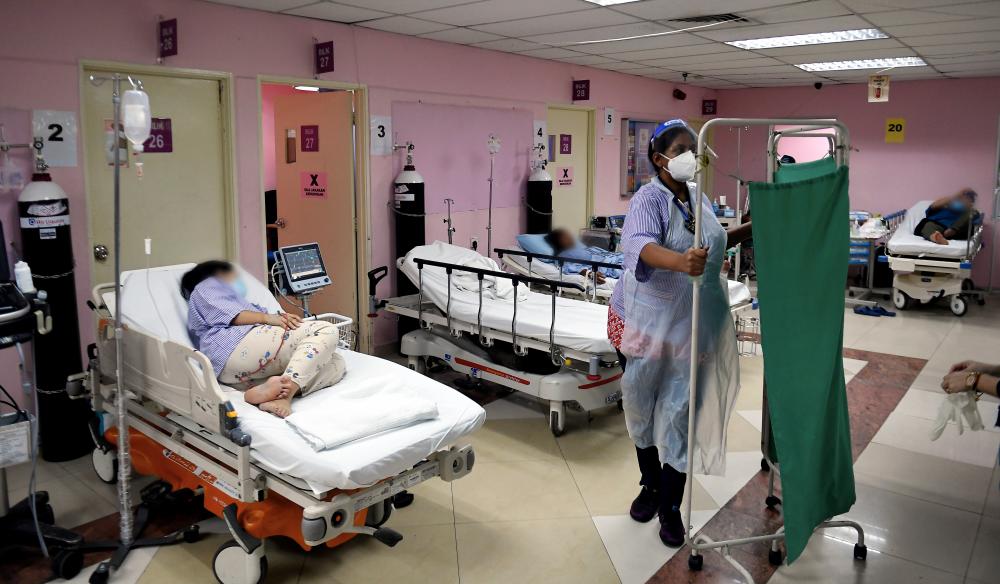PETALING JAYA: Some 2.2 million Malaysians, or 6.8% of the population, are carriers of thalassaemia – an inherited condition that will cause them to spend a lifetime going in and out of hospitals.
If that is not bad enough, treating a child with thalassaemia will cost about RM1 million for every 10 years of life. That does not include costs for additional medical treatment arising from complications that range from diabetes to heart failure.
Doctors said although one in 20 Malaysians is a thalassaemia carrier, they are mostly asymptomatic and unaware of their condition. As such, couples are being advised to have a blood test done to check for the presence of thalassaemia before starting a family.
Studies have also found that Chinese and Malays are more affected by the disease compared with Indians and Orang Asli, with the Health Ministry estimating that between 150 and 300 babies are born annually with severe thalassaemia syndromes.
Ampang Hospital consultant haematologist Dr Jameela Sathar said awareness is very important because thalassaemia can be prevented.
“This can be done by knowing your thalassaemia carrier status through a blood test, and if found positive, avoid marrying another carrier. Of course, this is easier said than done, but having a child with thalassaemia is a huge challenge to couples and their families,” she said.
Thalassaemia is an inherited blood disorder caused when the body does not make enough of a protein called haemoglobin, which is required by red blood cells to transport oxygen throughout the body.
The most common thalassaemia in Malaysia are Beta thalassaemia major, Hb E Beta thalassaemia and Hb H disease.
“The probability of having thalassaemia is one in four, or 25% for every pregnancy.
“But it does not mean that out of four children, one will be affected. It could be that every child may be affected, if the odds are against the carrier couple,” Jameela said.
She added that a child suffering from thalassaemia will have his whole life revolved around the hospital, with repeated and painful venous punctures for blood tests and blood transfusions.
“The lifetime cost to treat a single child with thalassaemia is RM1 million for every 10 years of life. This covers only the cost of blood transfusions and iron chelation, which is the removal of excess iron from the body with special drugs.
“It does not include the cost of transport, time off work, reduced productivity and other medications to treat the many complications of iron overload from regular blood transfusions, such as diabetes mellitus, growth failure, delayed puberty, liver cirrhosis and heart failure,” she said.
Jameela also said some women may opt for Pre-implantation Genetic Diagnosis, which is a procedure to select embryos that are free of thalassaemia and implant them in the womb.
However, this is an expensive procedure.
“The carrier couple have to bear the costs as it is currently not subsidised by the government. The procedure is invasive and has its own complications as well. Hence, it is much easier to avoid marrying another carrier if you also carry the thalassaemia gene.”
Jameela said the only treatment to cure thalassaemia is a bone marrow transplant from a suitable donor. However, only a few are eligible.
“Most patients with severe thalassaemia will require regular blood transfusions throughout their lifetime as well as iron chelation therapy to remove the excess iron built up in the body as a result of blood transfusion.”
Haematologist Dr Veena Selvaratnam, who is also from Ampang Hospital, said there is a need to aim to “prevent” thalassaemia, if possible.
“If patients are carriers of the same type of thalassaemia, B-B or A-A, there is a 25% chance of each pregnancy producing a child with thalassaemia major or transfusion-dependent thalassaemia,” she said.
She added that to reduce the numbers of those who are born with this common autosomal recessive disorder, couples should get tested and avoid having children if they are found to be gene carriers.










